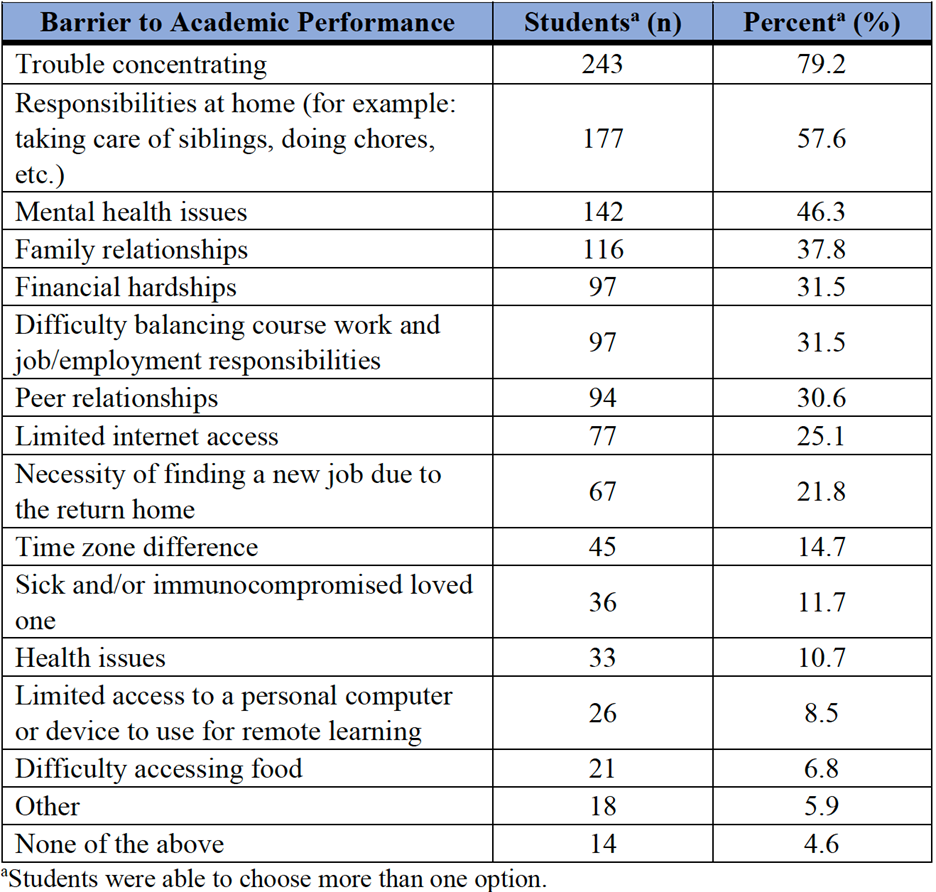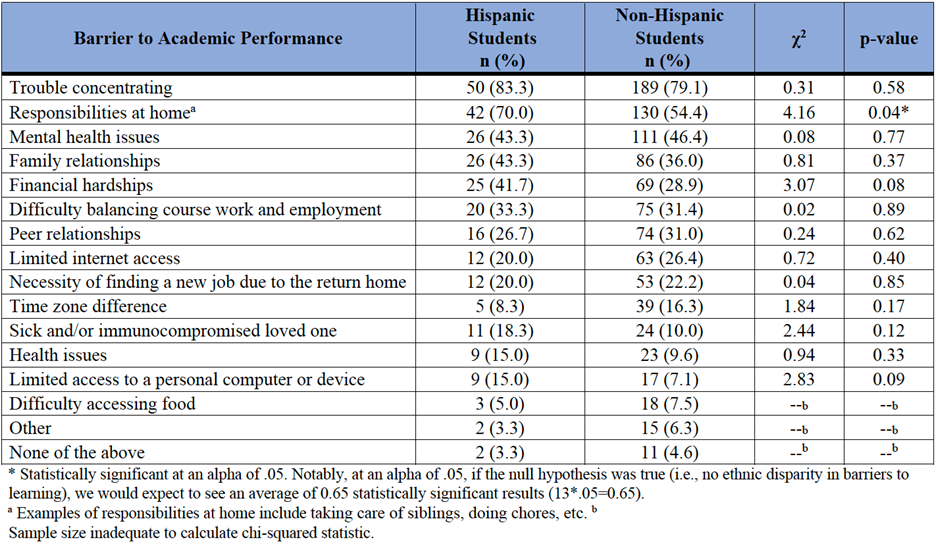Research to be presented at the 2021 American Academy of Pediatrics National Conference & Exhibition finds a significant number of students report mental health issues
ITASCA, IL – College students whose classes transitioned to remote learning during the COVID-19 pandemic experienced difficulties concentrating and balancing responsibilities at home, as well as mental health issues, according to research presented during the American Academy of Pediatrics 2021 National Conference & Exhibition.
A study abstract, “Barriers to Academic Performance in Distance Learning Settings Among College Students,” is based on results of a survey emailed to academic student groups from 166 accredited colleges and universities across 44 states in June 2020. Students responding to the anonymous, voluntary survey reported barriers to virtual learning, with nearly 80% of the 307 respondents reporting difficulties in concentrating.
A notable number of students reported having limited access to a computer or device to use for remote learning and difficulty accessing food, according to the survey. Hispanic students reported experiencing more responsibilities at home, including taking care of siblings and doing chores, than non-Hispanic students. Sample sizes for other racial or ethnic groups were inadequate for analysis.
“It is vital for educators to consider the varying barriers to virtual learning while making policy in response to the COVID-19 pandemic,” said abstract author Nelson Chow, a Princeton University student and Developmental and Behavioral Pediatrics Research intern at Cohen Children's Medical Center. “It is especially important to have a particular awareness of the cultural and socioeconomic factors that may impact students' outcomes."
Besides trouble concentrating, students surveyed reported barriers to distance learning that included: responsibilities at home (57.6%), and mental health issues (46.3%). Also, 8.5% of students reported having limited access to a computer or device to use for remote learning and 6.8% of students reported having difficulty accessing food. Only 14 students (4.6%) reported experiencing no barriers to academic performance in a distance learning environment.
The research suggests that the prevalence of students reporting that mental health issues, limited access to technology, and food insecurity as a barrier to distance learning is concerning.
Nelson Chow will present the study abstract at 3:34 pm CT Saturday, October 9.
Please note: only the abstract is being presented at the meeting. In some cases, the researcher may have more data available to share with media or may be preparing a longer article for submission to a journal.
# # #
The American Academy of Pediatrics is an organization of 67,000 primary care pediatricians, pediatric medical subspecialists and pediatric surgical specialists dedicated to the health, safety and well-being of infants, children, adolescents and young adults. For more information, visit www.aap.org.
ABSTRACT
Program Name:
Abstract Title: Barriers to Academic Performance in Distance Learning Settings Among College Students
Nelson Chow
Lynbrook, NY, United States
Saturday, October 9, 2021: 3:34 PM –
In response to the COVID-19 pandemic, many colleges during the 2020 spring term transitioned to distance learning. This new learning environment posed numerous obstacles that may have negatively affected the academic performance of students, and these obstacles may be more prevalent amongst minority groups. The objective of this study is to assess the prevalence of barriers to academic performance among US college students in distance learning environments during COVID-19.
An anonymous, voluntary survey was distributed to academic student groups at 166 accredited colleges/universities across 44 states by email in June 2020. Students were asked if their college transitioned to distance learning and other questions related to their educational experience. Students were asked if they faced barriers that affected their academic performance after transitioning to distance learning. If yes, they were able to select from a list of barriers to online learning which they believed affected their academic performance during this transition. Students were able to choose more than one option from the list. Chi-Squared analyses were performed to examine differences in barriers to academic performance for Hispanic and non-Hispanic students. Sample size for other racial or ethnic groups were inadequate for Chi-Squared analyses.
A total of 682 college students responded to the survey; 307 completed the survey and met inclusion criteria. Data for barriers to academic performance are presented in Table 1. The most reported barriers included trouble concentrating (n=243, 79.2%), responsibilities at home (57.6%), and mental health issues (n=142, 46.3%) (Table 1). Of note, 8.5% (n=26) of students reported having limited access to a computer or device to use for remote learning and 6.8% (n=21) of students reported having difficulty accessing food. Only 14 students (4.6%) reported experiencing no barriers to academic performance in a distance learning environment (Table 1). Hispanic students experienced more responsibilities at home, including taking care of siblings and doing chores, than non-Hispanic students after returning home for remote learning (X 2 = 4.16, p=0.04) (Table 2).
The prevalence of students reporting mental health issues, limited access to technology, and food insecurity posed a barrier to distance learning is concerning. Future studies should investigate how sociodemographic disparities in barriers to distance learning may have played a role in the academic performance of students during the pandemic.
Table 1: Student-Reported (n = 307) Barriers to Education During Distance Learning

Table 2: Chi-Squared Analyses Examining Barriers to Education for Hispanic (n=60) and Non-Hispanic (n=239) Students
